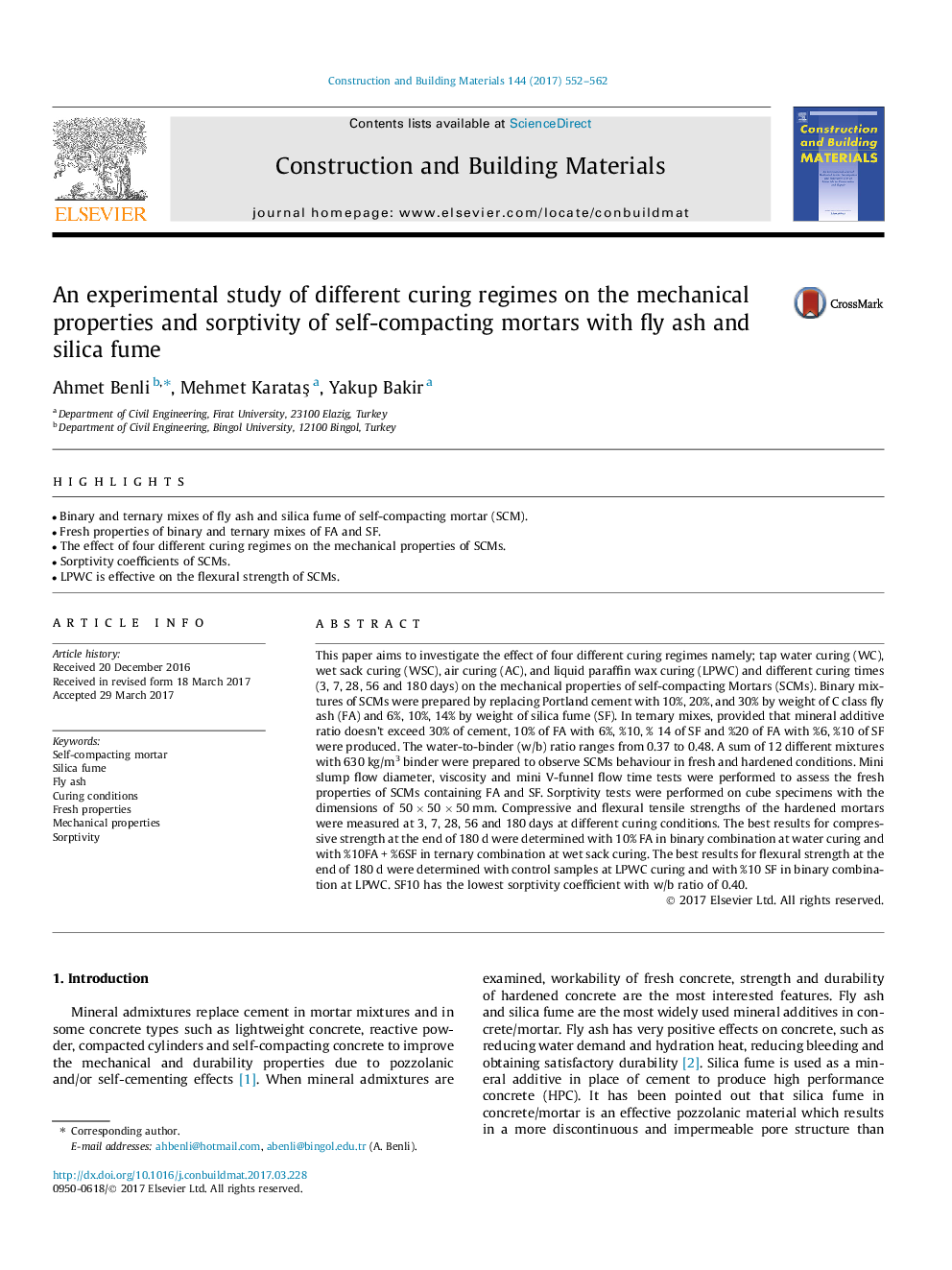| Article ID | Journal | Published Year | Pages | File Type |
|---|---|---|---|---|
| 4913192 | Construction and Building Materials | 2017 | 11 Pages |
Abstract
This paper aims to investigate the effect of four different curing regimes namely; tap water curing (WC), wet sack curing (WSC), air curing (AC), and liquid paraffin wax curing (LPWC) and different curing times (3, 7, 28, 56 and 180Â days) on the mechanical properties of self-compacting Mortars (SCMs). Binary mixtures of SCMs were prepared by replacing Portland cement with 10%, 20%, and 30% by weight of C class fly ash (FA) and 6%, 10%, 14% by weight of silica fume (SF). In ternary mixes, provided that mineral additive ratio doesn't exceed 30% of cement, 10% of FA with 6%, %10, % 14 of SF and %20 of FA with %6, %10 of SF were produced. The water-to-binder (w/b) ratio ranges from 0.37 to 0.48. A sum of 12 different mixtures with 630Â kg/m3 binder were prepared to observe SCMs behaviour in fresh and hardened conditions. Mini slump flow diameter, viscosity and mini V-funnel flow time tests were performed to assess the fresh properties of SCMs containing FA and SF. Sorptivity tests were performed on cube specimens with the dimensions of 50Â ÃÂ 50Â ÃÂ 50Â mm. Compressive and flexural tensile strengths of the hardened mortars were measured at 3, 7, 28, 56 and 180Â days at different curing conditions. The best results for compressive strength at the end of 180Â d were determined with 10% FA in binary combination at water curing and with %10FAÂ +Â %6SF in ternary combination at wet sack curing. The best results for flexural strength at the end of 180Â d were determined with control samples at LPWC curing and with %10 SF in binary combination at LPWC. SF10 has the lowest sorptivity coefficient with w/b ratio of 0.40.
Keywords
Related Topics
Physical Sciences and Engineering
Engineering
Civil and Structural Engineering
Authors
Ahmet Benli, Mehmet KarataÅ, Yakup Bakir,
